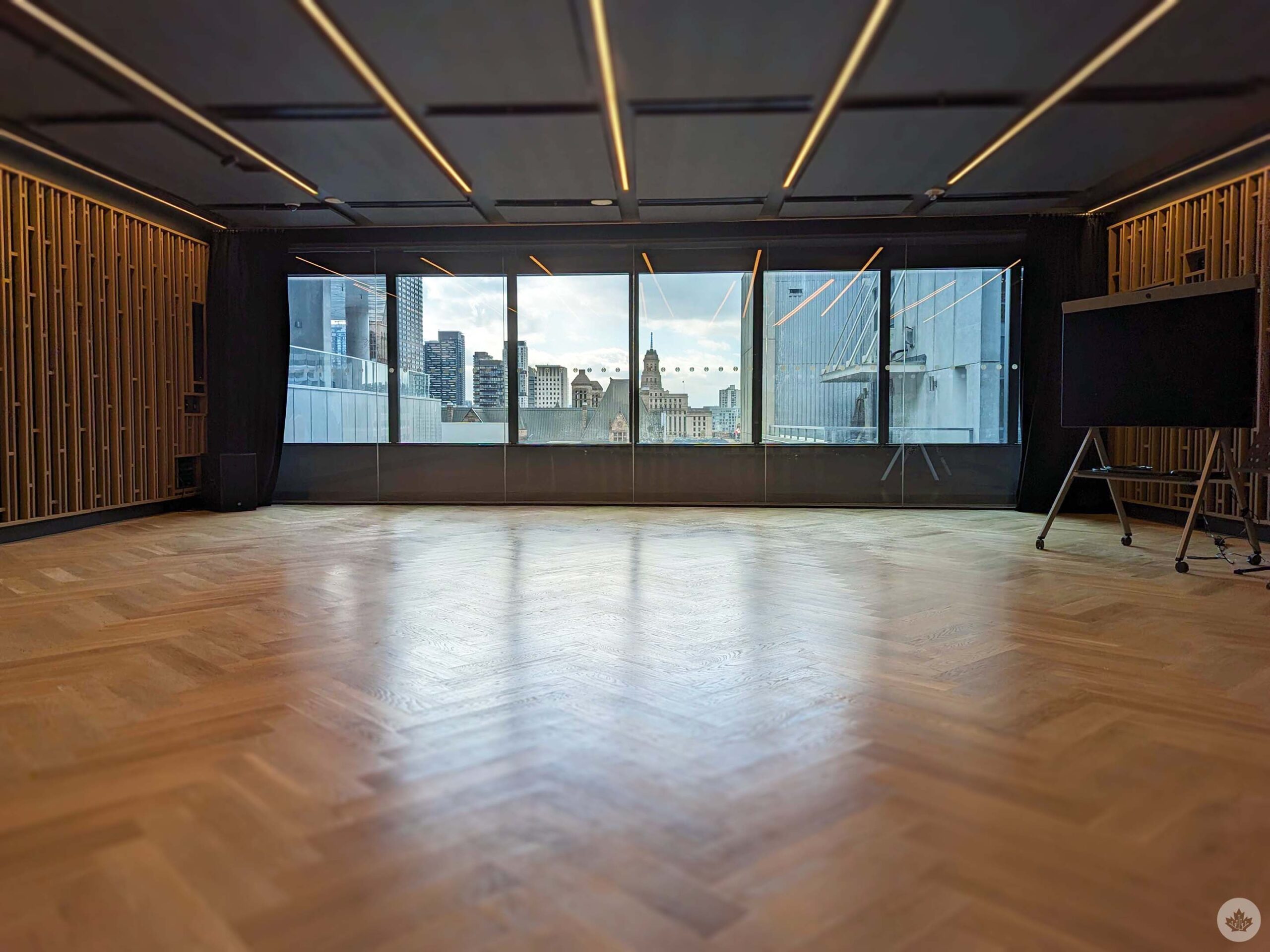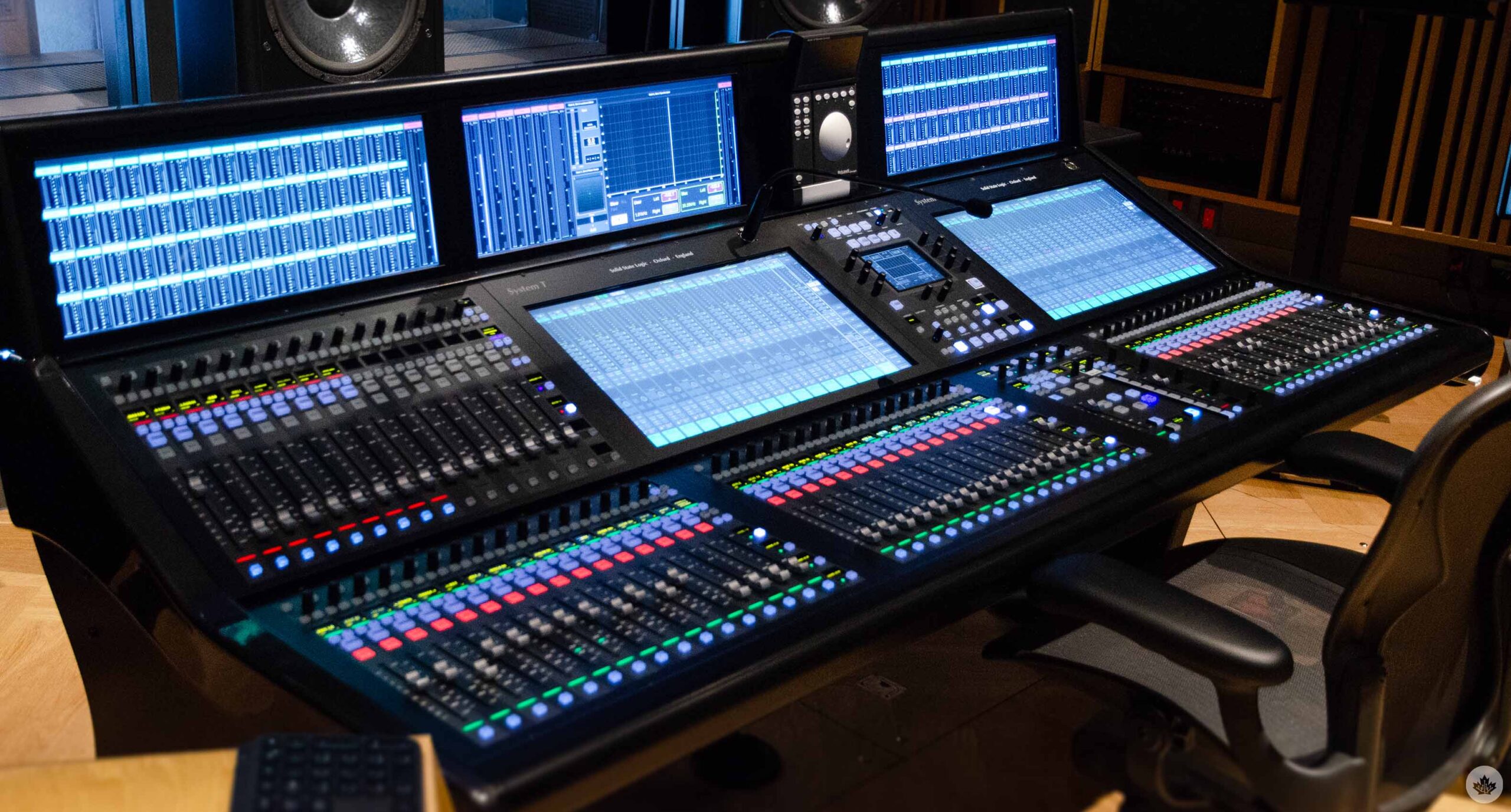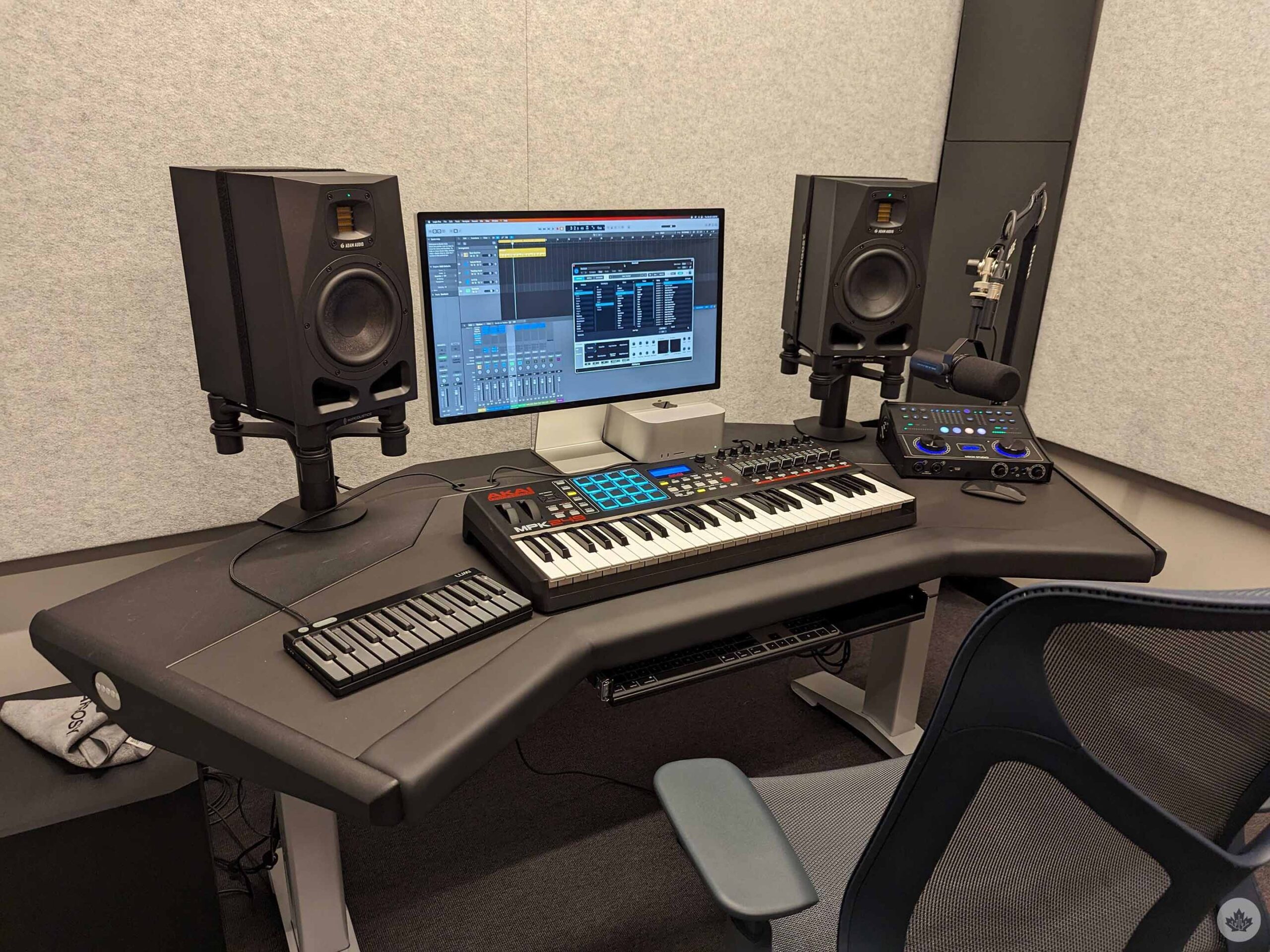
I remember the years in my early twenties by the concerts I attended – Justin Nozuka at Danforth Music Hall in 2015, Bloc Party at The Phoenix in 2016, Ólafur Arnalds at The Elgin in 2018. And so much of how I recall those experiences is defined by the venues where they took place. Tightly packed bars and ornate theatres, all setting the scene for a night of music.
But when I think of Toronto’s music scene, one venue stands out from the rest: Massey Hall. It’s more than just a concert hall – it’s a Canadian icon. To say that I was excited to go behind the scenes would be an understatement.
When I met up with Doug McKendrick, Vice President of Production and Technology at Massey Hall, he casually dropped that Ron Sexsmith was doing a sound check on the main stage. A Canadian legend was warming up a few floors below my feet.

I’d been invited to check out the new recording space, and while I knew that there would be some cool technology powering the space, I was expecting a small studio above the main venue, not a technology powerhouse. It suddenly made sense why they’d invited someone from MobileSyrup.
“We needed an infrastructure that would give us the ability to record a lot of tracks and channels simultaneously.”
“We wanted to be able to record anywhere, at any time,” Doug said, sitting across from me in the engineer’s chair. “If we were just recording through this window here, that would be one thing. But there are spaces that are six to seven floors below us, or even in a different building. We needed an infrastructure that would give us the ability to record a lot of tracks and channels simultaneously. Sometimes 100 different microphone inputs to manipulate. And that’s how we ended up with what you’re seeing here.”
Looking behind him, it was hard to believe all of those inputs were being sent to this room. There are hardly any cables at all. And aside from the mixing board, preamps and speakers, the only other visible tech in the space is a Mac monitor and a couple iPads.

“This console is connected with four ethernet cables. No bulky patch-based stuff or big wiring harness to deal with. We wanted it to be streamlined. And the same goes for the workflow when recording,” he says, motioning to the monitor. “We needed computers that could handle everything we were going to throw at them. You could do it with external chassis and various racks and all that, but we wanted everything in one place. And that’s when we started to think about going towards a Mac Pro.”
It’s a story we hear time and again – creatives looking to get the technology out of the way to keep them focused on their work. The last thing you want is a recording session to be interrupted to let a project render or to have to switch out cables.
When I asked him how they landed on Apple, his answer was simple.
“We’re not messing around here,” he said, laughing. “It didn’t seem like there was any point in not just getting the best of the best.”
At this, he spun his chair around and opened a project with dozens of tracks.
“The M2 Ultra chip has kind of been a game changer.”
“The M2 Ultra chip has kind of been a game changer, at least in our world. You see how it can handle a lot of productivity tasks and it just makes sense. It’s all about asking, ‘how can we put out the highest capacity in the least amount of time?’”
Seeing it in action was impressive. The recording was from a week prior in the 500-person live performance TD Music Hall at Allied Music Centre. Not to be too hyperbolic, but it was unlike anything I’d ever heard. It wasn’t just surround sound, it was like being in the hall with the audience as the music was played live.
But I’m not a professional sound engineer, so I asked for his honest opinion on the sound. Could he hear a difference between this and other recording spaces? His answer was simple.
“Absolutely. It’s world class.”

Peaking my head into the practice studios and various recording rooms, each one was outfitted with a Mac. The entire floor has been outfitted with Apple gear to enable musicians to work without limitations. As he shows me around the spaces, Doug shares a common scenario.
“Everything is on one system, so you record a quick clip, you airdrop it and you’re back recording. It keeps everything going.”
“Imagine being in the studio, you have a spark, so you head down the hall to one of the rooms,” he says. “Everything is on one system, so you record a quick clip, you airdrop it and you’re back recording. It keeps everything going.”
And that’s possibly the biggest takeaway from the entire experience. Massey Hall isn’t just setting itself up to be a high-end recording – it’s building a space for future generations of musicians. This isn’t just a venue for musicians who could sell out thousands of seats. It’s a space for aspiring musicians and sound engineers to hone their skills.
Unknown to many, Massey Hall is a charitable not-for-profit space with community outreach and educational programs. In years past, those programs had to take place in venues across Toronto. Now, with seven floors and a variety of newly renovated performance spaces, everything can happen under one roof.

The hope is that young musicians have a space to establish their sound, experience performing, and eventually graduate to the main Massey Hall stage.
“It’s all about creating that loop. We want to get people in here and start creating.”
Knowing that generations of musicians will grow up attending, practicing, and playing at Massey Hall, I can’t help but root for Doug’s vision of Massey Hall as one of the premiere live recording spaces for musicians in the years to come.
“You could be listening to your favourite artist ‘Live at Massey Hall.’”
MobileSyrup may earn a commission from purchases made via our links, which helps fund the journalism we provide free on our website. These links do not influence our editorial content. Support us here.


